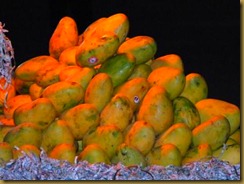Squiggles can be an embarrassment sometimes, and they are caused by camera shake, slow shutter speeds, and slow lenses opened at a larger f-stop value!
When the newspapers and the news channels announced that we would be witnessing the planet Venus transiting across the Sun and that it was an event that would be a once in a lifetime event, my brother and I decided that we should take a photograph of the celestial event. My fear was that taking a direct photograph of the Sun would surely damage our eyes, and of course the sensor of the camera. We therefore decided to take some precautions to protect both our eyes and the sensor of the camera. Fortunately we came across a discarded X-ray negative and then holding it in front of the lens went on to take snaps of the Sun.While my brother held on to the negative, I positioned the lens as close to the darker area of the X-ray sheet and the results we got were really good as you can see for yourselves. Our prior attempts to photograph the same on smaller compact cameras failed. For the photographs I used a Nikon L-100 Coolpix camera. For the first snap the aperture (f-stop value) was 5.4, the shutter speed was 1/324, and the ISO was set at 80 the focal length of 150 mm was selected. For the second snap, all the values were retained except that the focal length was changed to 195 mm, and the shutter speed was reduced to 1/256.
While it is true that an understanding of lighting conditions determine the quality of the photograph, as for example too much of light will wash away the colours, while too less will make the photograph come out dark. Many a times, in low light conditions you may be prompted to use an external flash, but then often this leads to disappointment as in the case of out door photography, the flash might reflect back from dust particles and in any case the flash might not be powerful enough to reach distant objects. In such conditions, you would be forced to increase the ISO sensitivity to the highest value, 6400 or so although this makes the snap rather grainy, and then you would be compelled to open the aperture of the lens to the smallest f-stop number 2.8. Also, you would be compelled to use a slower shutter speed, 1/125, 1/80 and so on. The resulting settings would result in rather frustrating exaggeration of camera shake. One alternative is to use a tripod and a remote shutter release to prevent even the slightest vibration resulting from pressing the shutter release manually!
Both photographs were taken at night without a flash! In the first photograph some ambient light was provided by the lamp on the stall which throws the right amount of light on the face of the buyer or fruits. Somehow I selected this photograph since it seems to have captured a rather warm ambience and has captured the right mood! The second photograph, one of many failed attempts has a rather surreal effect partly caused by the moon hidden behind the clouds giving out just the right amount of light, while the light on top of the building creates the illusion of a moon. Both photographs were taken without a flash and without a tripod! It is a matter of holding your breath prior to taking the snap itself, and yes, press the shutter button without thinking about it , be spontaneous!

The above photograph was taken using a flash at close quarters, and it can be noticed that there is some bleaching of colour as a result! Bouncing the light and using a diffuser might have worked indoors, but then this was a photograph taken out doors!
Technorati Tags: Photography sans flash





awesome ! Some of the shots are just outstanding. Yes the venus transition is certainly an event worth all the while. Good shots.
ReplyDelete